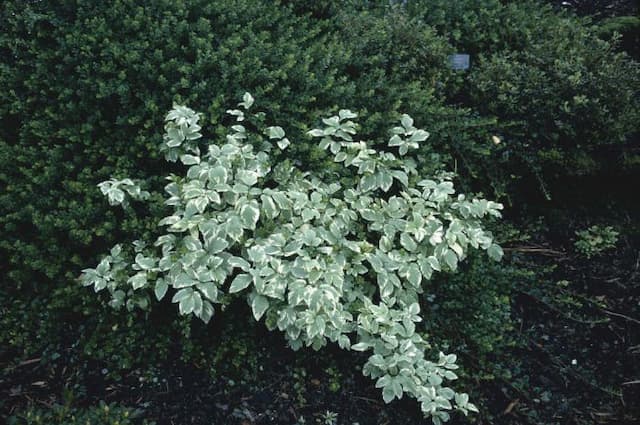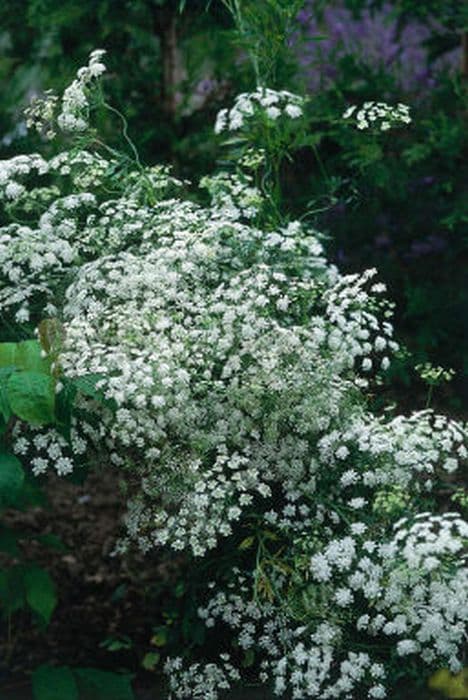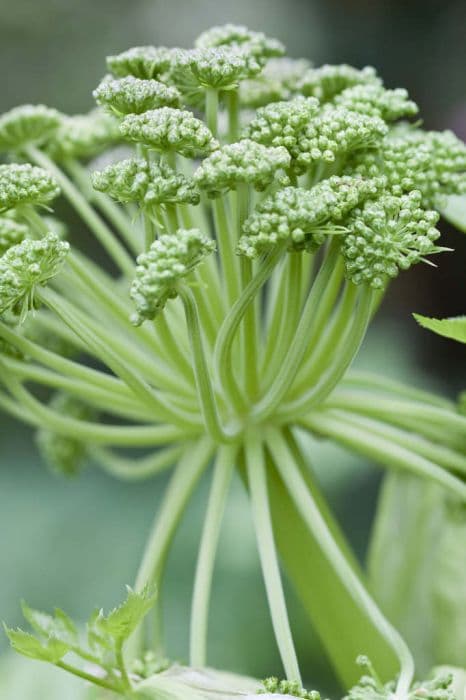Giant fennel Ferula communis

ABOUT
F. communis is a robust perennial with large leaves divided into many slender segments, and branched stems bearing many rounded umbels of small yellow flowers in early summer
About this plant
 Names
NamesFamily
Apiaceae
Synonyms
Giant Fennel
Common names
Ferula tingitana, Ferula communis subsp. communis, Ferula linkii, Peucedanum commune, Thapsia communis.
 Characteristics
CharacteristicsLife cycle
Biennials
Foliage type
Deciduous
Color of leaves
Green
Flower color
Yellow
Height
6 feet (1.8 meters)
Spread
3 feet (0.9 meters)
Plant type
Herb
Hardiness zones
8
Native area
Mediterranean
Benefits
 General Benefits
General Benefits- Erosion Control - Ferula communis has deep root systems that help stabilize soil and prevent erosion.
- Habitat for Wildlife - Provides shelter and food for various species of insects and birds.
- Agricultural Uses - Stems and leaves can be used as fodder for livestock, especially goats and sheep.
- Ornamental Plant - Its striking yellow umbrella-shaped flowers make it a distinctive ornamental plant for gardens.
- Culinary Uses - Parts of the plant are used in traditional Mediterranean cuisines for flavoring dishes.
- Cultural Significance - The plant's uses and symbolism are deeply embedded in some cultures, contributing to their rich heritage.
 Medical Properties
Medical Properties- Antispasmodic: Helps to relieve spasm of involuntary muscles.
- Carminative: May assist in relieving flatulence.
- Emmenagogue: Potentially stimulates or increases menstrual flow.
- Analgesic: Can be used to alleviate pain.
- Expectorant: May help in the expulsion of phlegm from the lungs.
- Antiseptic: Could be involved in preventing infection through its inhibitory effect on the growth of microorganisms.
 Air-purifying Qualities
Air-purifying QualitiesThis plant is not specifically known for air purifying qualities.
 Other Uses
Other Uses- Ferula communis, commonly known as giant fennel, has stalks that can be used as a source of tinder for starting fires due to their highly flammable nature.
- The dried stems of giant fennel can serve as a lightweight and durable material for making walking sticks and canes after they are properly cured and treated.
- Traditional fishermen have used the hollow stems of giant fennel to make floats for fishing nets, thanks to their buoyancy and natural hollow structure.
- In some rural cultures, the long stems of giant fennel have been historically used as natural fencing materials to create temporary barriers for livestock.
- Giant fennel’s resin, known as galbanum, has been used historically as incense in various religious and cultural rituals for its distinctive aromatic properties.
- The fibers from giant fennel's stems can be woven into rough fabrics and used to make durable sacks or bags for storage and transport.
- The seeds of Ferula communis can be used as a flavoring agent in food, imparting a unique taste and aroma to some traditional dishes.
- Giant fennel stalks can be used as an organic garden stake to support the growth of climbing plants or fragile vegetation in gardens due to their sturdy nature.
- Artists and craftsmen may use the dried resin from giant fennel in varnishes and adhesives, leveraging its sticky and binding properties.
- The dried hollow stems of giant fennel have been used as musical instruments in some cultures, particularly as a primitive type of flute or wind instrument.
Interesting Facts
 Feng Shui
Feng ShuiThe Giant Fennel is not used in Feng Shui practice.
 Zodiac Sign Compitability
Zodiac Sign CompitabilityThe Giant Fennel is not used in astrology practice.
 Plant Symbolism
Plant Symbolism- Protection: Ferula communis, commonly known as giant fennel, has been associated with protection. In ancient lore, its sturdy stems were believed to ward off evil spirits and negative energies.
- Healing: The plant's historical use in traditional medicine lends it the symbolic meaning of healing and curing ailments, as it was once used to treat various health issues.
- Purification: Giant fennel was also used for purification rites in some cultures, representing the cleansing of space or the human spirit of negative influences.
- Power: With its impressive height and presence, giant fennel symbolizes power and assertiveness, reflecting its dominant stature in the plant world.
- Authority: In some mythologies, deities or high-ranking individuals wielded staffs made of giant fennel, thus symbolizing authority and command.
 Water
WaterGiant fennel requires moderate watering, especially during dry periods. It's best to water once a week, allowing the soil to dry out slightly between waterings. Provide approximately 1-2 gallons per plant each time you water, ensuring you're soaking the soil to reach the roots, but be cautious not to overwater. Over the course of a month, this equates to about 4-8 gallons per plant. It's crucial to avoid waterlogging as Giant fennel does not tolerate standing water well.
 Light
LightGiant fennel thrives best in full sunlight, so it's important to plant it in a spot where it will receive at least 6 hours of direct sunlight daily. Avoid planting in full shade as this can impede the plant's growth and flowering potential. Bright, unfiltered sunlight is ideal, mimicking the plant's native Mediterranean environment.
 Temperature
TemperatureGiant fennel prefers warm temperatures and does best in a temperate range of 50°F to 75°F. It can tolerate a minimum temperature down to about 40°F, but frost can be damaging. Maximum temperature tolerance is around 90°F, beyond which the plant may suffer heat stress.
 Pruning
PruningPruning of Giant fennel is not generally necessary but can be done to remove any dead or damaged stems to maintain plant health and appearance. The best time for pruning is in late winter or early spring before new growth begins.
 Cleaning
CleaningNot needed
 Soil
SoilGiant fennel (Ferula communis) thrives in well-draining soil with a slightly acidic to neutral pH of 6.0 to 7.0. A soil mix composed of loam, sand, and a bit of compost is ideal for this plant, ensuring proper drainage and a modest level of nutrients.
 Repotting
RepottingGiant fennel rarely needs repotting as it prefers to be left undisturbed once established and has a deep root system. Repotting every few years or when the plant outgrows its current container is sufficient.
 Humidity & Misting
Humidity & MistingGiant fennel is adaptable to a range of humidity levels and does not require any special humidity conditions. It can thrive in the naturally occurring humidity of its outdoor environment.
 Suitable locations
Suitable locationsIndoor
Place in bright light and avoid overwatering.
Outdoor
Plant in full sun, well-drained soil, minimal watering.
Hardiness zone
7-10 USDA
 Life cycle
Life cycleGiant fennel (Ferula communis) starts its life cycle as a seed, which upon germination in favorable conditions, develops into a small seedling. As it grows, it forms a rosette of large, pinnate, fern-like leaves. After a few years, when the plant is mature enough, it sends up a tall, thick flowering stalk that can reach several meters in height. This stalk bears numerous yellow umbel-shaped flowers, which after pollination, produce seeds that are distributed by wind, allowing the plant to propagate. The plant is monocarpic, meaning that after it flowers, sets seed, and disperses its progeny, the individual dies. The seeds remain dormant until conditions are suitable for germination, thus continuing the life cycle of the giant fennel.
 Propogation
PropogationPropogation time
Spring
Propogation: Ferula communis, commonly known as giant fennel, is most commonly propagated through its seeds. To ensure successful germination, it's best to sow the seeds in either the fall or early spring. The seeds require a well-draining soil mixture and should be placed at a shallow depth, no more than an inch (about 2.5 cm) under the soil surface, as they need sufficient light to germinate. It is important to keep the soil moist but not waterlogged during the germination period. Once seedlings emerge and are large enough to handle, they can be transplanted to their final growing positions, ensuring they have enough space to accommodate their large size at maturity.









